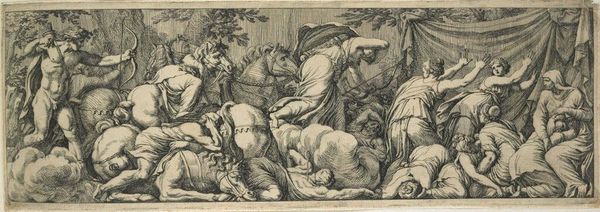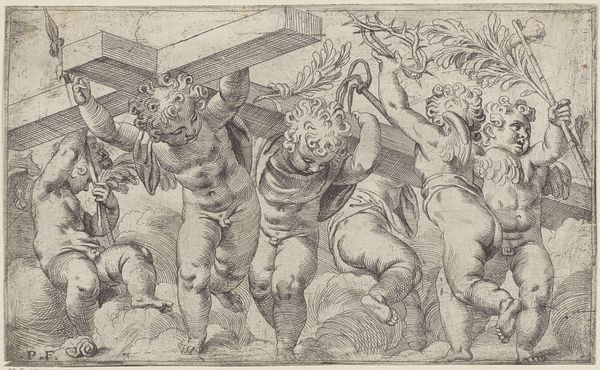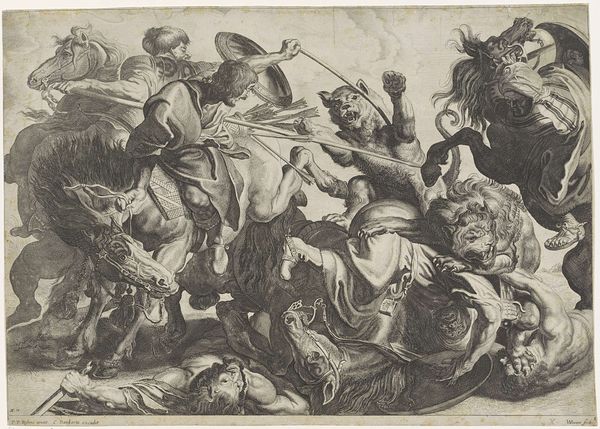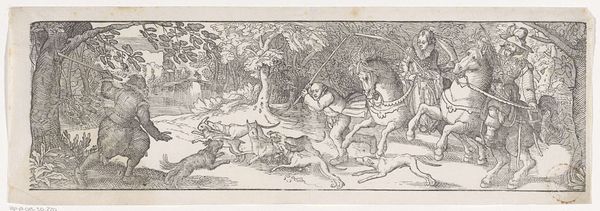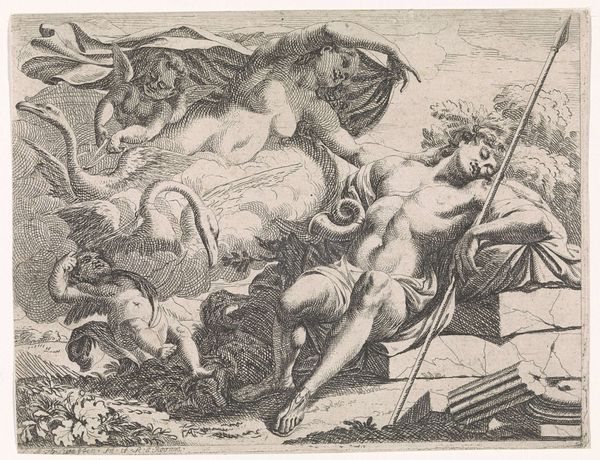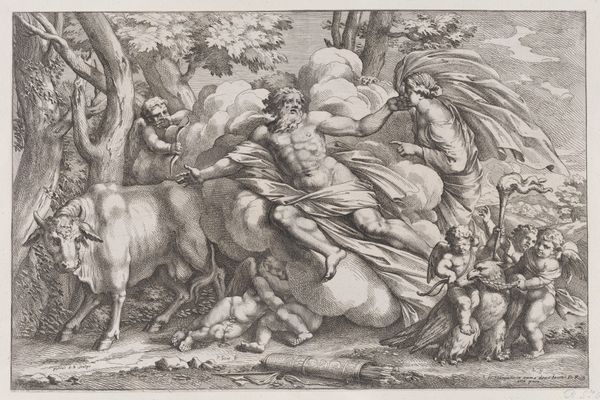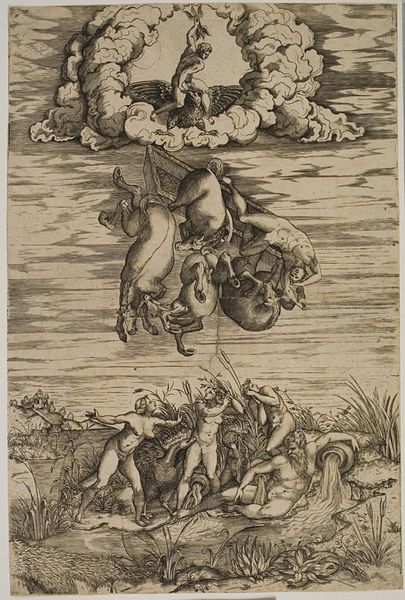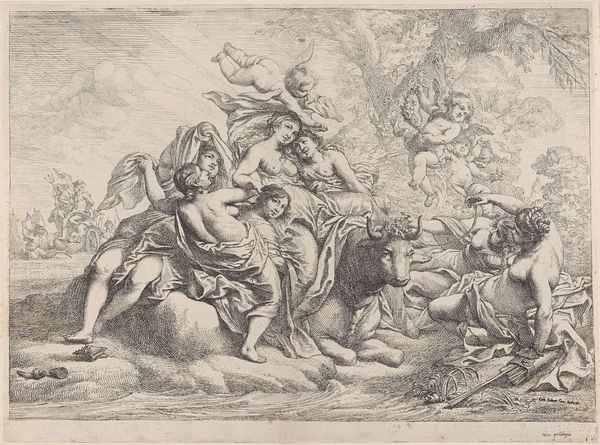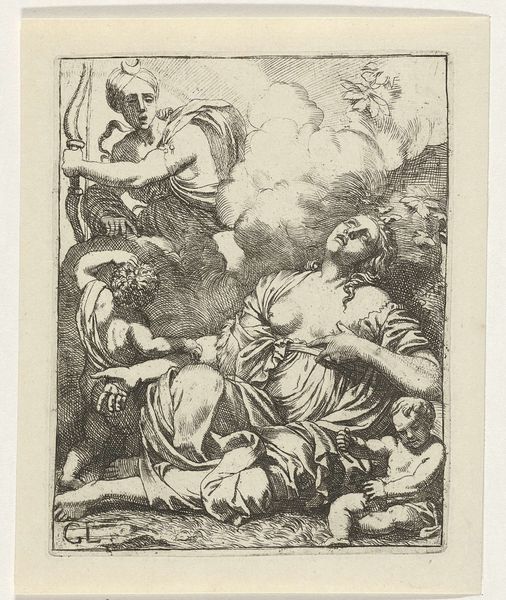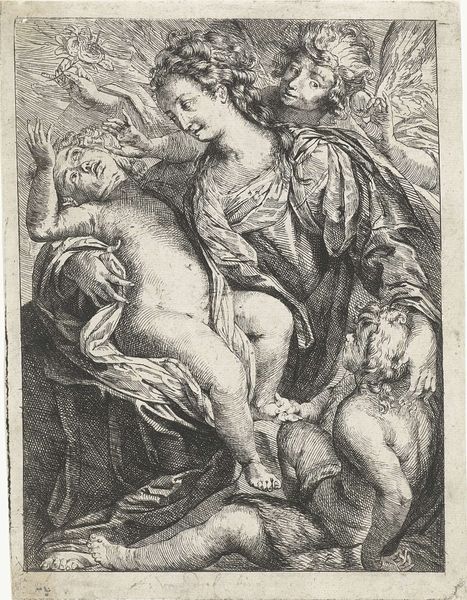
drawing, print, engraving
#
drawing
#
baroque
#
pen drawing
# print
#
figuration
#
line
#
history-painting
#
engraving
Dimensions: height 114 mm, width 340 mm
Copyright: Rijks Museum: Open Domain
Curator: Look at this, it's a piece by Giovanni Battista Galestruzzi, created around 1656. It's an engraving, a pen drawing actually, titled *Apollo en Diana doden de kinderen van Niobe,* depicting Apollo and Diana slaying Niobe's children. Editor: Immediately, the line work strikes me. It’s incredibly intricate. The composition feels very classical, almost like a frieze, despite the chaos of the scene. Curator: Exactly. This scene captures a pivotal moment from Ovid's *Metamorphoses*. Niobe, Queen of Thebes, boasted about her fertility, having many children, thus provoking the wrath of Leto, the mother of Apollo and Diana. Editor: And the dynamism! The artist really captures the feeling of action within that linear style, very baroque with its dramatic excess. Look at the figures themselves; their poses convey so much distress. Curator: Yes, and beyond just illustrating the tale, it's meant to invoke complex moral questions: what are the consequences of hubris, of challenging the gods? Niobe’s children represent dynastic ambition cut short. Their vulnerability humanizes the moral, suggesting an awareness of mortality. Editor: Mortality indeed. Consider how the artist used light and shadow, or rather, the absence of shading techniques, to accentuate the horror, the sheer starkness of divine retribution. The engraving technique emphasizes outlines, simplifying shapes. It's about reducing this complex drama to its purest essence. Curator: These simplified shapes reinforce that archetypal sense of inevitable tragedy, connecting us to our human condition. These archetypes still resonate deeply. We recognize the themes even if we aren’t immediately familiar with the story. Editor: The lack of perspective actually intensifies the sense of flatness, flattening the narrative, turning the story into a tableau. Everything is equally exposed, giving equal weight to both aggressor and victim. It pushes it beyond historical art. It is closer to the eternal now of myth. Curator: It makes you wonder, doesn’t it, about how artists use symbols to tell these ever relevant tales. I’m thinking especially of contemporary examples, today... Editor: It's amazing to consider how much emotion is captured here, in this monochromatic medium. There’s beauty even within the terrible drama unfolding, revealing something crucial about the ways human stories take hold through aesthetic form.
Comments
No comments
Be the first to comment and join the conversation on the ultimate creative platform.
